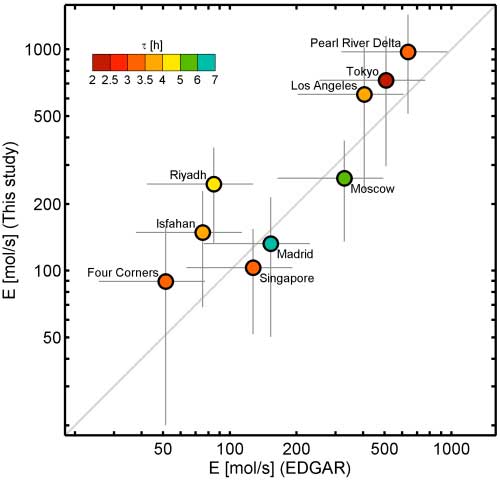By analyzing the downwind patterns of Nitrogen Dioxide (NO2) for different wind conditions, we simultaneously determine megacity Nitrogen Oxides (NOx) emissions and lifetimes from Aura's Ozone Monitoring Instrument (OMI). Estimated daytime lifetimes are ~4 hours at low and mid-latitudes, but ~8 hours in wintertime for Moscow. Derived NOx emissions are is reasonable agreement with global emission inventories, but are higher by a factor of 3 for the Saudi-Arabian capital Riyadh.

Left: Mean NO2 tropospheric columns in the Middle East from OMI measurements during 2005-2009 for calm (w<2 m/s) conditions with <30% cloud cover. The grey box indicates Riyadh and the surrounding area.
Right: Mean NO2 column densities around Riyadh (white cross) for different wind conditions, i.e. calm (center panel) and 8 main wind direction sectors (surrounding panels; arrows indicate the mean of the respective ECMWF winds).

The resulting NOx emissions and lifetimes. Scatterplot of the resulting NOx emissions for the considered megacities and power plants versus the respective EDGAR emissions (V4.1, integrated over 250_250 km2). Resulting NOx lifetimes are color coded.
Credit : Beirle et al. (2011) Science, courtesy F. Boersma (KNMI)
11.04.2011